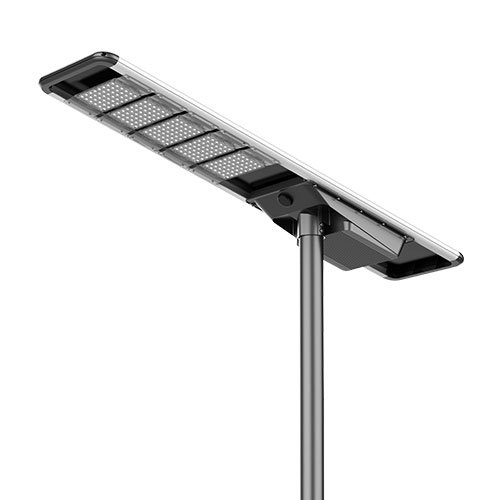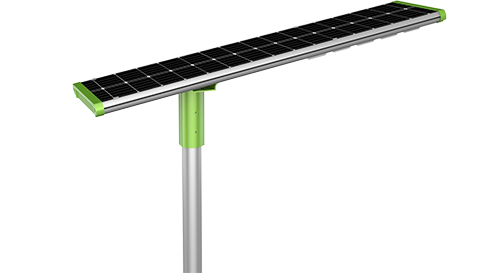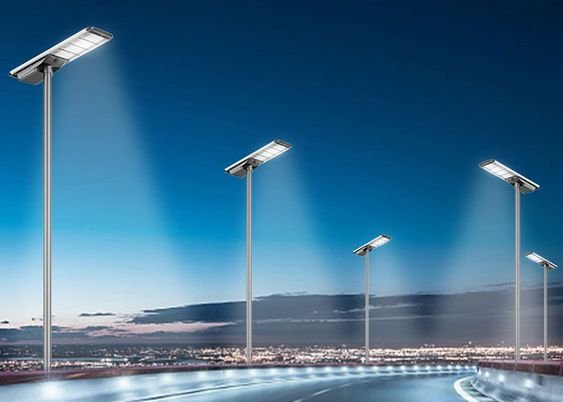As demand for clean and decentralized energy grows, solar street lights are getting attention for their cost-saving, sustainable design.
An all-in-one solar street light integrates the solar panel, battery, LED lamp, and controller into one compact unit—offering faster installation, lower costs, and fewer maintenance points.
This integrated approach is transforming how we think about public lighting, especially in areas where traditional infrastructure is lacking or impractical.
What Is an All-in-One Solar Street Light?
Traditional solar lighting systems require separate components—PV panel, battery box, LED lamp, and controller—connected through wiring. This makes the system complex to install, maintain, and troubleshoot.
An all-in-one solar street light simplifies the system by embedding all essential components into one single housing.
An all-in-one solar street light combines solar panel, lithium battery, LED light, and controller into a sealed, compact unit that can be mounted directly onto a pole.
No trenching, wiring, or assembly is required. The system works automatically—charging during the day and lighting at night based on light sensor input.
Core Components
| Component | Role in the System |
|---|---|
| Solar Panel | Converts sunlight to electricity |
| Lithium Battery | Stores energy for nighttime use |
| LED Lamp | Provides bright, high-efficiency illumination |
| Smart Controller | Manages power, timing, and energy efficiency |
This design is ideal for remote installations or places with limited technical resources.
Key Features That Make All-in-One Solar Street Lights Different?
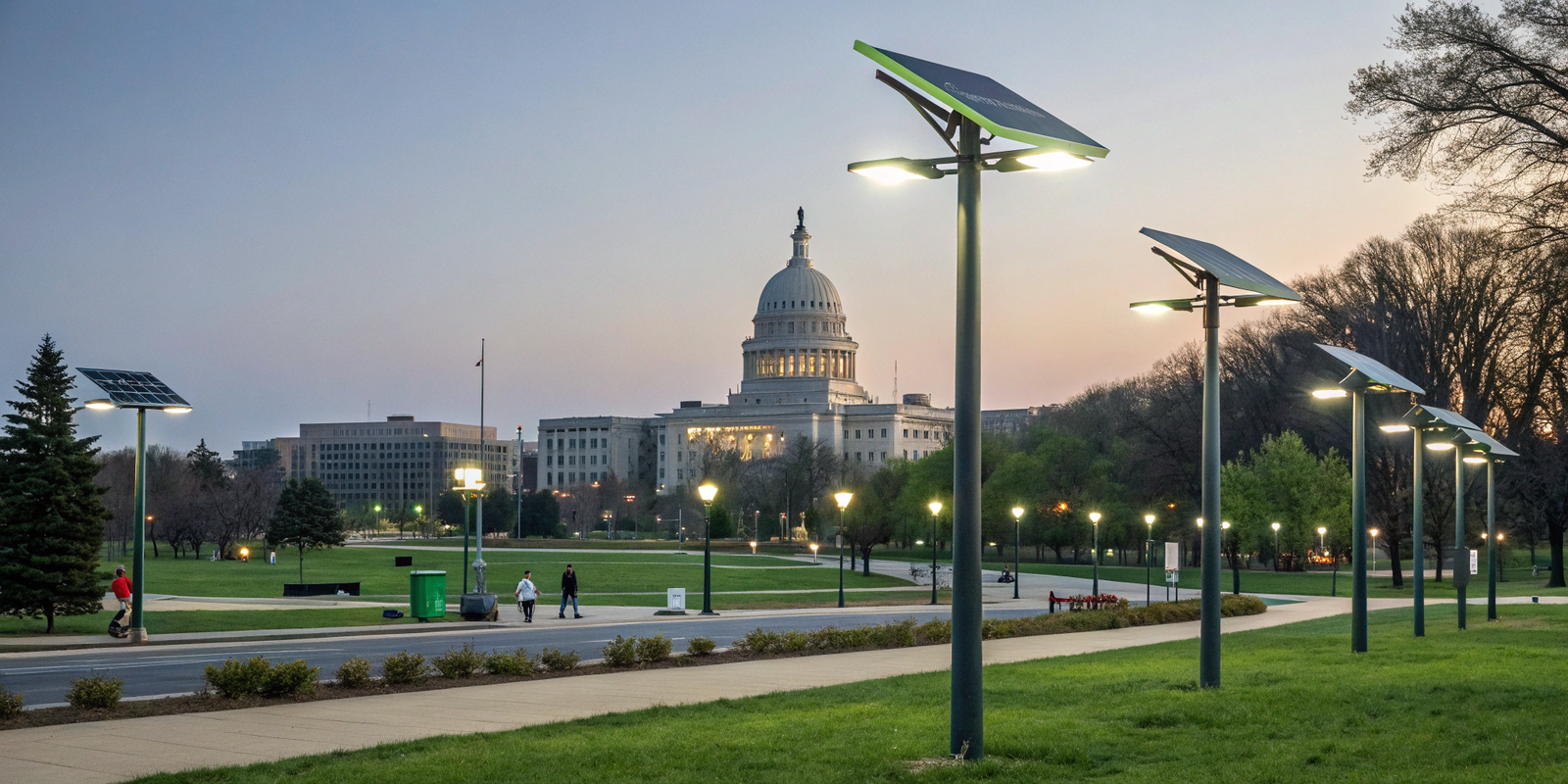
Conventional solar lighting systems involve multiple modules and connections, each with a potential failure point.
All-in-one models eliminate most of those points with an integrated system. From an engineering perspective, this dramatically increases system reliability.
Key features include motion sensors, daylight sensors, lithium-ion batteries, compact structure, and plug-and-play setup.
Engineering-Level Innovations
- Smart Sensors: Detect motion or ambient light and automatically adjust brightness.
- MPPT Charging: Some advanced models include maximum power point tracking for better solar harvesting.
- LiFePO₄ Batteries: Offers 2,000–4,000 charge cycles, outperforming older lead-acid alternatives.
- IP65/IP67 Ratings: Enclosures are sealed and weather-resistant for outdoor durability.
The integrated housing also offers protection against vandalism and water ingress, increasing service life.
All-in-One Solar Street Light vs Traditional Solar Street Lights
Different lighting technologies serve different use cases. Understanding their differences helps engineers and buyers make better deployment choices.
All-in-one solar street lights simplify the design, reduce cost, and improve durability, while traditional systems offer more flexibility and scalability.
Comparison Table
| Feature | All-in-One Solar Light | Traditional Solar Light |
|---|---|---|
| Design Complexity | Integrated, single unit | Multiple separate units |
| Installation | Plug-and-play, fast | Requires wiring and trenching |
| Maintenance | Minimal, sealed enclosure | More components to maintain |
| Cost | Lower total cost | Higher upfront cost |
| Battery Type | Lithium or LiFePO₄ | Often lead-acid |
| Light Direction | Fixed panel angle | Adjustable panel orientation |
| Smart Features | Included by default | Optional or separate |
| Repairability | Limited (entire unit) | Easier part replacement |
When space, budget, or time is constrained, the all-in-one format wins. For high-power or large-scale systems, traditional split-type models might be better.
Benefits of All-in-One Solar Street Lights
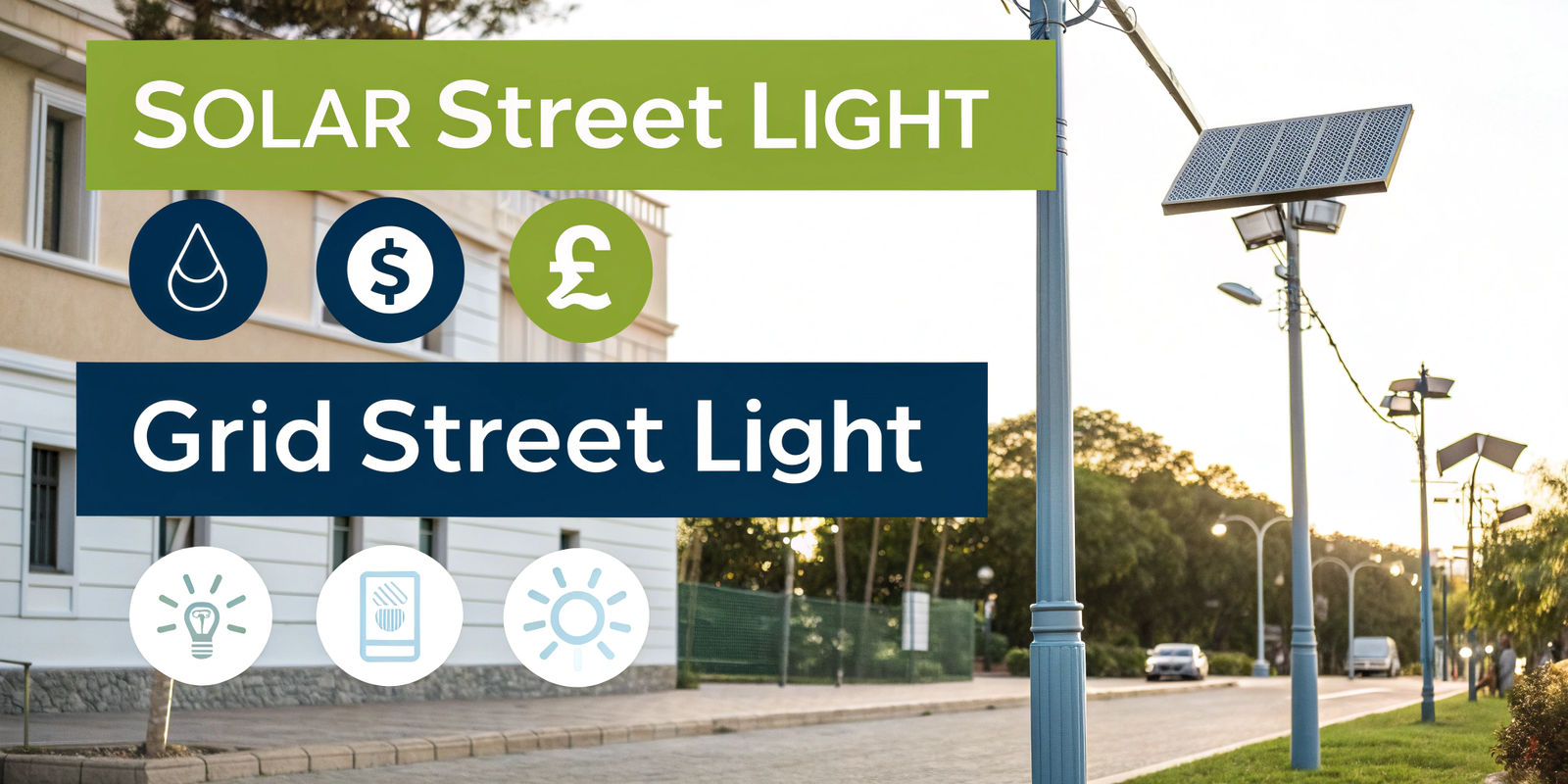
For many public and private projects, simplicity is the biggest need. Not every deployment has engineers or technicians on-site.
All-in-one solar street lights are fast to install, low in maintenance, and difficult to tamper with—ideal for distributed and remote applications.
Benefits Breakdown
| Benefit | Description |
|---|---|
| Quick Installation | Mount the unit, and it's ready—no wiring or trenching |
| Lower Total Cost | Fewer components, less labor, and faster deployment |
| Modern Design | Sleek look that blends with both rural and urban settings |
| Theft & Tamper Resistance | Compact unit offers fewer exposed parts |
| Maintenance Friendly | No exposed wiring; fewer parts to check |
Aesthetics matter too. Municipal projects often choose all-in-one models for their modern, streamlined appearance.
Limitations and Considerations of All-in-One Solar Street Lights
No solution is perfect. Integrated solar lights come with trade-offs that must be factored into design decisions.
The main limitations involve battery capacity, fixed panel angle, and higher replacement cost if one part fails.
Engineering Constraints
- Panel Size Limit: Small housing restricts panel wattage and sun exposure angle.
- Thermal Management: Compact design can trap heat in hot climates, affecting battery life.
- Repair Complexity: If the LED or controller fails, the entire unit may need replacing.
- Performance in Cold Climates: Batteries may struggle below 0°C unless specially rated.
Best Practices
| Issue | Mitigation Technique |
|---|---|
| Limited Sunlight | Use models with MPPT controllers or oversized panels |
| Extreme Temperatures | Select models with thermal regulation features |
| Component Failure Risk | Choose vendors offering modular service design |
Proper application matching is key. These systems are best suited for environments with moderate sun exposure and low-to-medium lighting demands.
Applications Best Suited for All-in-One Solar Street Lights

All-in-one solar street lights aren’t universal. But where they fit, they outperform traditional options in speed, simplicity, and cost.
They’re ideal for low-traffic roads, rural areas, parks, campuses, and temporary or emergency lighting setups.
Common Use Cases
| Application Area | Justification |
|---|---|
| Rural Roads | No grid needed, simple setup |
| Residential Streets | Low light demand, fast installation |
| Parking Lots | Independent operation, motion sensor savings |
| Parks & Greenways | Tamper-proof, low maintenance |
| Post-Disaster Zones | Emergency lighting, quick to deploy |
For projects that require fast deployment with minimal maintenance—especially in off-grid or hard-to-reach areas—this is the ideal solution.
How to Choose the Right All-in-One Solar Street Light
There are hundreds of models on the market, but not all are created equal. Selecting the wrong model can result in poor lighting, short battery life, or system failure.
When choosing, check lumens, battery capacity, panel wattage, sensor type, IP rating, and the manufacturer’s credibility.
Key Technical Factors
| Factor | Recommended Value / Standard |
|---|---|
| Brightness (Lumens) | 1,500–6,000 depending on road width |
| Battery Capacity | Minimum 150Wh for overnight autonomy |
| Panel Wattage | At least 30–80W depending on location |
| IP Rating | IP65 or higher for outdoor use |
| Sensor Technology | PIR motion sensor or radar recommended |
| Warranty & Support | 3–5 years with spare part availability |
Also, verify certifications like CE, RoHS, or IEC compliance. These indicate tested quality and safety.
Conclusion
All-in-one solar street lights simplify public lighting by combining components into a single unit. They cut costs, speed up installation, and reduce maintenance—making them ideal for fast, scalable lighting in rural and urban settings. As the technology matures, these systems are becoming a smart choice for sustainable infrastructure.


